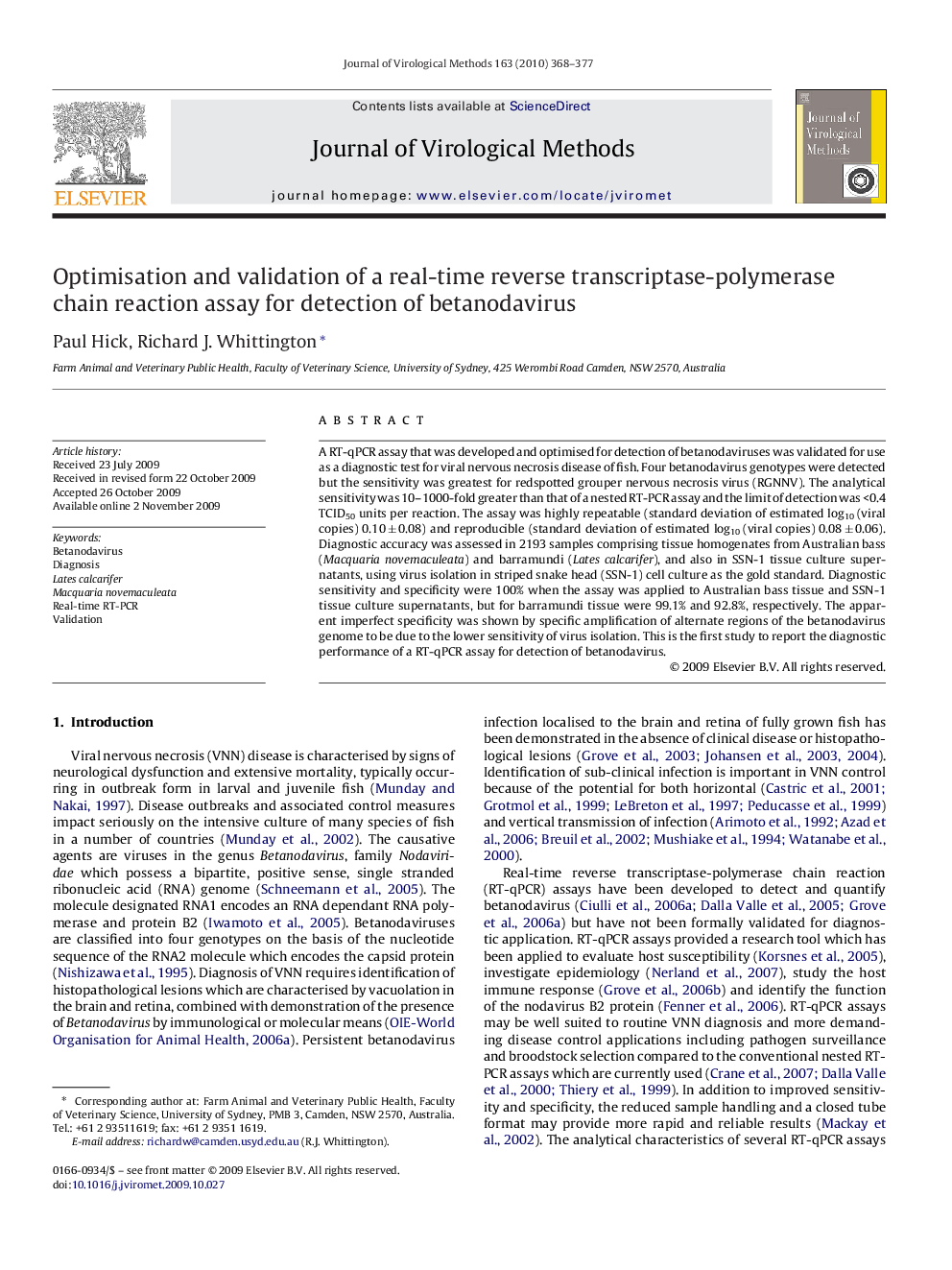| Article ID | Journal | Published Year | Pages | File Type |
|---|---|---|---|---|
| 3407346 | Journal of Virological Methods | 2010 | 10 Pages |
A RT-qPCR assay that was developed and optimised for detection of betanodaviruses was validated for use as a diagnostic test for viral nervous necrosis disease of fish. Four betanodavirus genotypes were detected but the sensitivity was greatest for redspotted grouper nervous necrosis virus (RGNNV). The analytical sensitivity was 10–1000-fold greater than that of a nested RT-PCR assay and the limit of detection was <0.4 TCID50 units per reaction. The assay was highly repeatable (standard deviation of estimated log10 (viral copies) 0.10 ± 0.08) and reproducible (standard deviation of estimated log10 (viral copies) 0.08 ± 0.06). Diagnostic accuracy was assessed in 2193 samples comprising tissue homogenates from Australian bass (Macquaria novemaculeata) and barramundi (Lates calcarifer), and also in SSN-1 tissue culture supernatants, using virus isolation in striped snake head (SSN-1) cell culture as the gold standard. Diagnostic sensitivity and specificity were 100% when the assay was applied to Australian bass tissue and SSN-1 tissue culture supernatants, but for barramundi tissue were 99.1% and 92.8%, respectively. The apparent imperfect specificity was shown by specific amplification of alternate regions of the betanodavirus genome to be due to the lower sensitivity of virus isolation. This is the first study to report the diagnostic performance of a RT-qPCR assay for detection of betanodavirus.
